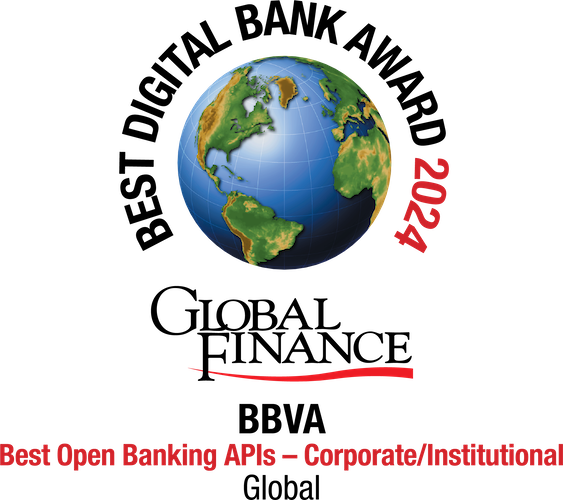Historically, banks have been solely responsible for storing and managing customer data and information. However, in recent years, with the emergence of open banking and new regulations at European and global level, the banking infrastructure has been opened up to third parties, bringing about an unprecedented revolution in the financial industry.
Open banking has gradually given way to more open models where banks are not the only players. Today, open finance, a concept that goes much further, especially when it comes to adding value to the customer experience, has become increasingly important.
What is the difference between open banking and open finance?
Although open banking and open finance are two terms that are sometimes used interchangeably, they actually have different nuances. Open banking refers to opening the banking infrastructure to third parties, which allows other companies apart from banks to access and use banking information, usually through APIs and always with the customer’s express consent.
Open finance goes one step further. It represents an extension of open banking, as it enables data to be exchanged between a wide range of financial institutions to create a more comprehensive and accurate assessment of an individual. These include the banks themselves, insurance companies, fintechs, mutual funds, crowdfunding and crowdlending platforms, etc.
This concept is particularly important in regions where the banking system is not sufficiently developed and, consequently, where open banking is of little relevance. One of the prime examples is Latin America, where there is still a long way to go for financial services to be adopted by the unbanked population. In fact, according to the Inter-American Development Bank, the unbanked population in this region is estimated at 50% of the total population.
All indications are that open finance will be a global phenomenon that will experience significant growth in the coming years. According to the report “Open Finance Trends 2021: Creating a new ecosystem in Latin America” by the consultancy firm PricewaterhouseCoopers (PwC) and prepared by the Latin American Open Banking API platform Belvo, it is envisaged that total worldwide revenues of this mode will reach $9.87 million by 2022.

Open finance: toward greater financial inclusion
Open finance offers a much more enriching vision for third party companies to reach out to less financially developed areas. It therefore offers a much broader view of the population’s real financial activity and needs, regardless of whether or not these needs are met through a bank.
As a result, the customer base, data and banking information of the population increases significantly, allowing companies to develop much more innovative services, thus increasing financial inclusion globally.
In any case, the philosophy of open finance is not incompatible with open banking, quite the opposite. These are fully complementary services that bring added value to financial services customers, giving users the freedom to decide how and when they want to access and manage all their financial data, whether within their mobile banking application or any other tool they use in their daily lives.
How open finance helps to improve the customer experience
While open banking itself is a model that already contributes to improving the customer experience, open finance has gone one step further. Thanks to this new ecosystem, the benefits of an open financial infrastructure have a global reach and allow the quality and performance of the services offered to users to be improved.
A global financial overview on a single platform
One of the main applications of open finance is the possibility of accessing all financial products centrally from a single platform, whether these products are banking or not.
Thus, a company can develop an application where users can check the balance of their account, their cards, their mortgage credit, investments, insurance or loans from nonbank entities. The financial vision is therefore much more global and real.
Increased banking penetration in financially underdeveloped countries
In Latin America, barely half of the population has a bank account, and only 11% of users obtained a loan from a financial institution. This was, among other reasons, due to the difficulty in determining the debtor’s creditworthiness. This is also the case in some regions of Africa, despite the progress made in the last decade by countries such as Kenya.
Open finance allows banks to access their customers’ credit history and transactions to increase their level of banking penetration. This makes it possible, among other things, to offer tailor-made services in an agile manner, even in regions where the financial system is not sufficiently developed. Ultimately, open finance should serve to improve the banking inclusion of entire societies by increasing the degree of development of their financial systems.
New savings and investment opportunities
As applications can constantly be aware of users’ actual activity in relation to their personal finances, it is possible to offer a wide range of savings and investment services that are tailored to the preferences and needs of their customers.
In addition, all institutions can have much more organized and concentrated information in one place. Advisors will then be able to focus on analyzing this information and offer users products that suit their financial needs and objectives.
Full application integration
In this new interconnected ecosystem where financial information is completely open, applications can easily be developed that integrate new services for users within their own applications.
A clear example of this potential is the app that BBVA and Uber have created jointly in Mexico. Thanks to APIs, the bank’s financial services can be integrated with the US company’s platform. In fact, in a country with an underdeveloped banking system like Mexico, this alliance represents an opportunity to increase the level of banking penetration of Uber’s driver-members.
Open finance aims at transforming business and operational models that respond to the needs of users in any region worldwide, impacting countries economically and socially.



























